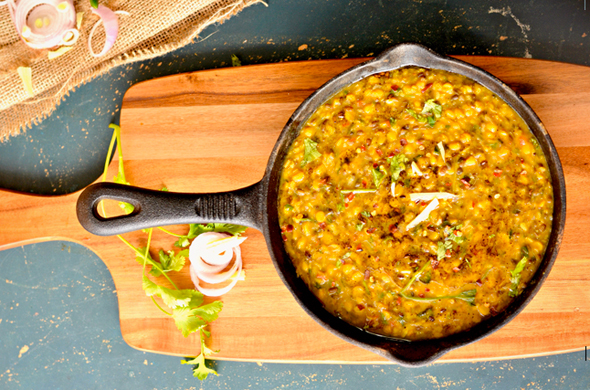Mama’s Punjabi Recipes: Mah Chole di Daal (Split Urad & Split Chana Dal)
Saved under Community, Current Stories, Recipe Corner
Tags: Baytown, Clear Lake, Cypress, Desi news, Greater Houston, Houston, Houston Desi news, India, Indian American community, Indian News, Indians in America, Indo-American News, Katy, Mah Chole di Daal, Mama’s Punjabi Recipes, NRI, pearland, south asia, South India, Split Urad & Split Chana Dal, Sugar Land, Texas, USA
It is amazing how many people are still unfamiliar with this most popular Punjabi daal of all and keep asking how it is made or tastes. So, by popular demand, below is a reprint of Mama’s Mah Chole di Daal recipe. It is a daal that is not normally available in most Indian restaurants unless it happens to be a dhaba in Delhi or the Punjab. It is reprinted with some additional information and directions.
For Punjabis, especially those who are vegetarians, daal (lentils) of any type is a must with most meals. For some reason, a favorite at most Punjabi dhabbas (roadside stalls) is Daal Makhani (Butter Lentils) which is usually made of the black Urad dal, known among Punjabis as Mah. This daal has become the basic one that most Indian restaurants worldwide make and the dish is now widely made all over the world. Part of its appeal maybe the slightly nutty taste and that the kernels do not dissolve into the curry even after repeated heating.
But to get to the heart of a true Punjabi, there is a daal that is a clear winner – Mah Chole di Dal. It is a mixture of the white split urad daal (with the black skin on) and yellow chana or chola dal (without the skin) and the dish has a technicolor look when the daals float in a brown curry.
Not only does it give off the nutty taste of the urad daal, but the creamier, gentler flavor of the channa daal tames the combined dish. It is also a daal that, without much effort, develops a nice, thick curry. It may be interesting to note that, a single cup serving of this daal has 16% fiber, 2gm of fat, 4 gm of protein, 11gm of carbohydrates and 80 calories.
For the authentic taste, most Punjabis eat Mah Chole di Dal with homemade roti or tandoori roti (some people prefer rice) and a good slice of raw red onion to bring out the full flavor of the meal! For even more gusto, try eating it on a charpai (jute string cot) sitting outside in the garden!!
Ingredients:
1 cup split urad dal
1 cup split chana dal
4 cups pani (water)
2 tbsp – Olive oil
1 tbsp fresh adrak (ginger) – peeled and diced; or use powdered
1 clove lasan (garlic) – peeled and diced fresh, or use powdered
1 tbsp – garam masala
Spices to taste: Lal mirch (red pepper); namak (salt); haldi (turmeric)
Directions:
1. Place the chana dal and water in a pot on the stove and bring to boil for 15 minutes.
2. Pour in the urad dal.
3. Add the ginger, garlic, and spices.
4. Bring to boil, if needed add more water but this dal should not be runny. Let the dal mix well, the grains of urad and chana dal should not appear separated but the dish should not appear too thick. The grains should be soft but not mushy.
5. When ready, add the olive oil and then the garam masala.
Some people prefer to make the dal in a pressure cooker. If you do, then mix the two dals and spices and bring the pressure cooker to one whistle and turn off the stove. Open the cooker after 20 minutes and then bring the dal to boil again to mix the ingredients well and repeat steps 4 and 5 above.
MAMA’S TIP OF THE WEEK
FREEZE EXCESS LEMON JUICE IN SMALL CUBES OR CONTAINERS
Some people are very good gardeners and raise vegetables and fruits. Often, in the southern US, I have noticed that people grow oranges and lemons and some even have so many to harvest, they get tired giving them away!
Lemon juice is often used in Indian cooking. One thing to do with excess lemons is to squeeze the juice out of them and then freeze it for use later. But, rather than freeze the juice in a large bottle, try freezing it in flexible ice cube trays. That way, you can use just a little piece whenever you need it rather than defrost a whole bottle or container.

Shakuntla Malhotra is a skilled cook of Punjabi dishes made in the old-fashioned style that she learnt as a young woman in her ancestral home in Lyallpur (since renamed Faisalabad), India before it became part of Pakistan after the Partition in 1947. People have often admired her cooking for its simplicity and taste that comes with each mouthful. Even in her mid-eighties, she continues to cook daily and agreed to share some of her delectable Punjabi recipes

